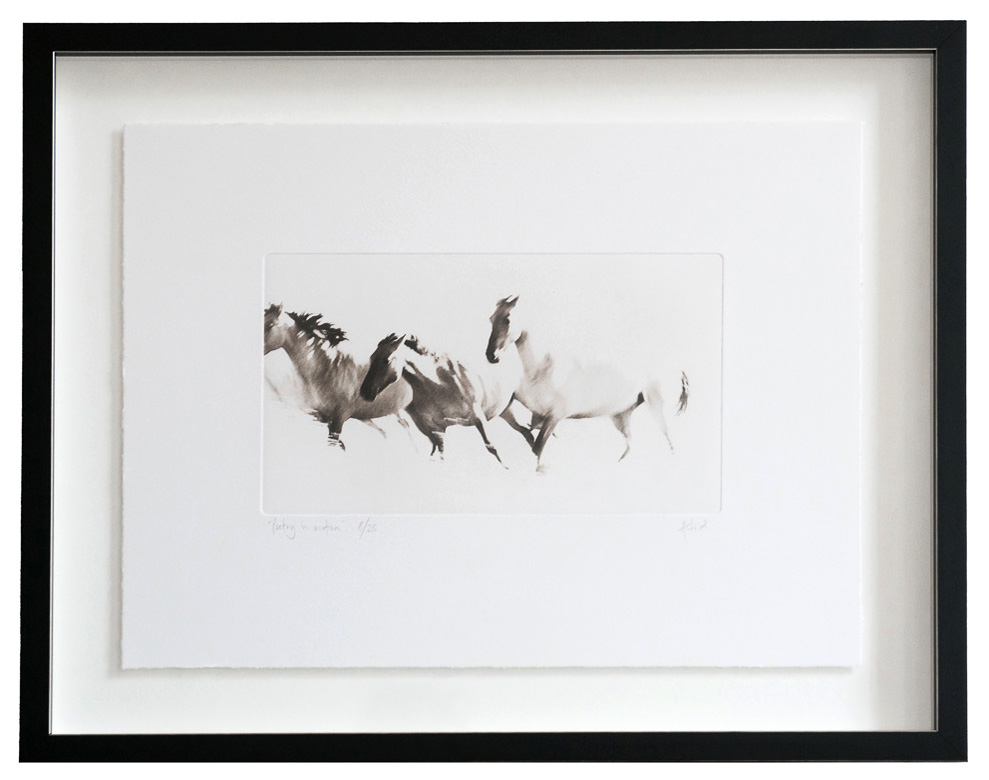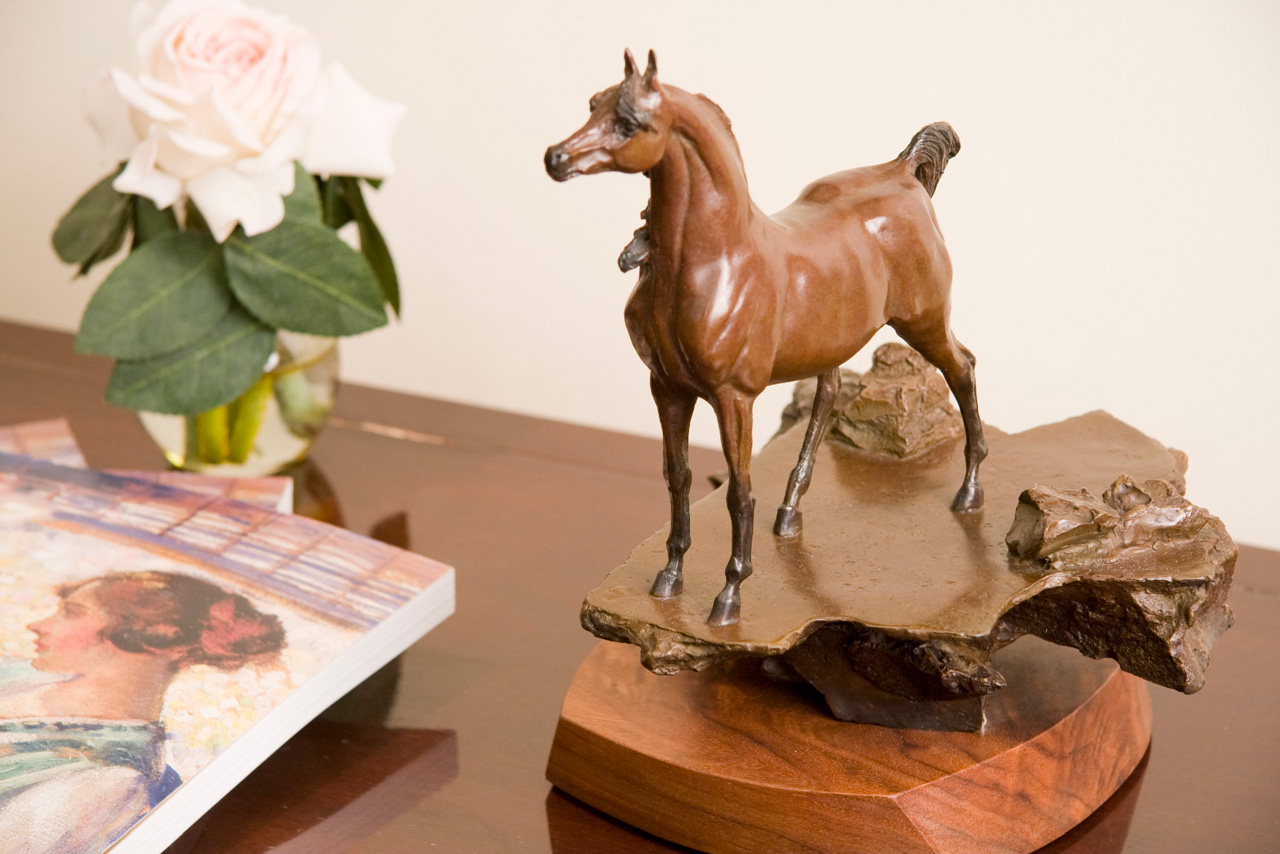News
Ivana Mlinar | Elite Equestrian Magazine Feature
View Ivana Mlinar’s Artist Page
Click to view larger
Vanessa Somers Vreeland’s Mosaic: By Prof. Giandomenico Spinola Expert on the Vatican Asaroton, Vatican Museums, Rome

“Asaroton 2000” Inspiration derived from the Ancient Roman Mosaic called Asaroton meaning unswept floor, Second Century A.D. 75 x 55 inches (1.7 x 1.4 meters)
Vanessa Somers Vreeland’s Mosaic: Asaroton 2,000
By Prof. Giandomenico Spinola
Expert on the Vatican Asaroton, Vatican Museums, Rome
The story of the “Asaroton Oikos,” the Unswept Floor, is very ancient. First mentioned by Pliny (Nat. Hist. XXXVI 184) who noted that this work was made for a mosaic pavement by Sosos, a well-known mosaic artist [in
the 2nd Century B.C.]
The fame of the Asaroton was astounding, due to the effect of its three-dimensionality (with shadows faithfully depicted), and as a work of beauty. The Romans copied it various times, including the Asaroton signed by Heraclitus, in our own Vatican Museum, and another version of it in the Museum of Aquileia. As in the original from Pergamon, these ancient Roman copies are works of technical virtuosity, made with tesserae (mosaic pieces) that are particularly small and carefully cut. In the Vatican Asaroton this comes down to nearly a million tesserae per square metre. Everything that was brought to the table in the Greco-Roman world can be found translated into rubbish on the unswept floor: fish bones, antennae of crustaceans, clam shells, chicken bones and feet, fruit skins and kernels, and so on. In the Vatican mosaic only the mouse is alive in this dead “tableau vivant,” while the theatrical masks, placed on one side of the floor, represent the entertainment. The value of such an art work is also in its allegories.
Pitagora said it was never necessary to clean up the fallen bits of food during a banquet, as they were destined for departed ancestors. It was a tradition to leave this detritus on the floor—at least until the guests had left—so as not to anger the dead.
There were always theatrics at a banquet: a traditional ceremony of poems, dances, plays. These receptions demonstrated the luxury and power of the host: with food brought in from foreign parts; expensive and highly exotic. The banquet represented in the Asaroton is exaggerated and ironic: imaginary rubbish, trash that doesn’t pollute or smell.
The precious and brilliant mosaic work of Vanessa Somers Vreeland represents a version just as artistic and ironic as the other Asaroton, naturally represented in a contemporary key. Instead of luxury she substituted modern technology. Instead of the contents there is often – though not only – its container. We should have entered into the era when garbage is sorted by categories, but our garbage is only theoretically recyclable; and here is our floor, our Earth, covered with empty cans, bottles and utensils from the kitchen and table. Our poor mouse doesn’t have much for his banquet. Vanessa Somers Vreeland’s mosaics are artistic masterpieces. They are also, perhaps, in her heart a satirical denunciation of what and how much we consume as well as what and how much detritus we leave for posterity.
Candida von Braun | Featured Artist in Elite Equestrian Magazine
View Candida von Braun’s Artist Page
Click image to view larger
Edwina Sandys | New Additions
Tsolmon Damba | New Artist Addition
View Tsolmon Damba’s Artist Page
Born in Darkhan City of Northern Mongolia in 1970, Tsolmon Damba studied Monumental Art at the College of Fine Art in Ulaanbaatar, Mongolia. Upon graduation he taught Studio Art at the College for two years. He has had a number of live demonstrations at the Smithsonian’s Freer Gallery of Art, the Arthur M. Sackler Gallery and the Museum of Natural History in Washington, D.C. As recognition for the universal appeal for his art, Tsolmon was chosen to paint a mural for the Mark Twain House & Museum in Hartford, Connecticut. Not only is he remarkably original in his ideas, all of his artworks are original – he makes no reproductions.
“Wind and the Arabian Stallion II” by Elizabeth Guarisco
Visit Elizabeth Guarisco’s Artist Page
Elizabeth Guarisco, American Contemporary
Wind and the Arabian Stallon II
Bronze on revolving walnut base
Edition: 21/24
11.25 x 10.5 x 8 inches
Signed: E. Guarisco
Provenance: The Artist
Click images to view larger
Astrid Harrisson | Behind the Photogravure Etchings Collection
View Astrid Harrisson’s Artist Page

“Poetry in Motion”
Astrid’s series of Photogravure Etchings has been realised through the kind support of Her Highness Shaikha Hissa bint Sultan bin Khalifa bin Zayed Al Nahyan, who graciously lends her Patronage to the collection.
Shaikha Hissa is a breeder of Arabian horses and introduced the Arabian Sport Horse Championship in Abu Dhabi to increase opportunities for Arabian horses in the UAE. She shares with Astrid an abiding love for the horse and has been a keen supporter of Astrid’s since they first met in 2010.
“Astrid’s skill lies in her ability to capture the exterior physical beauty as well as the ethereal inner beauty of the horse through the artistry of her images” Shaikha Hissa observed. Shaikha Hissa recognizes Astrid’s rare and remarkable talent to capture the spirit and beauty of horses and is proud to put this collection at the forefront of her artistic Patronage.
The combination of digital photography and modern technology with the traditional precision of photogravure creates an apt medium with which to capture the images that Astrid has compassionately composed, and emphasizes the limitless horizons of the natural world.
The collection has taken almost five years to realize, and is set to launch in 2016.
Shaikha Hissa holds a Bachelor of Arts degree in International Studies and Literature from Zayed University, was awarded the Zayed Award for her academic achievements within her college, and represented the United Arab Emirates at the Global Young Leaders Conference in Washington DC and New York City.
Vicky Moon | The Stylish Life: Equestrian
[galleria]
Writer and photographer Vicky Moon has chronicled the lives of the rich, the not-so-rich, the famous, and the not-so-famous for more than 20 years. Her latest book, The Stylish Life: Equestrain offers the reader an opportunity to explore the refined world of equestrian sports and culture through a beautiful array of black and white and lavish color photographs.
Readers will see images of royalty, socialites, and fabulously-dressed spectators intermingling with the high-profile stars of the sport. It is, quite simply, a wonderful compendium for every horse lover and anyone interested in rarefied sport culture and lifestyle.
Transcending sport and spectacle, all things equine and equestrian have captivated and charmed an elite global audience. Including horse racing, show-jumping, and polo, amongst other horse disciplines, this book encapsulates the glittering people, international events, fashion, and cultural impact—in such arenas as design and entertainment—that equine sports have had on the world at large.
With this, her eighth book, Ms. Moon has moved into the international sporting competitions, featured are the Kentucky Derby in Louisville to Royal Ascot in England to Prix de l’Arc in Paris, to events in Buenos Aires, Melbourne, Beijing, and many others. As you flip through the pages, peek inside luxurious horse stables and riding arenas, and marvel at the sheer glamour of such star athletes as Polo player Nacho Figueras and equestrienne Charlotte Casiraghi, the daughter of Princess Caroline of Monaco, resplendent in their riding attire.
As a life long equestrian, Ms. Moon has written about lavish parties, hunt balls, steeplechase races for People, The Washington Post, Town and Country, and Millionaire magazines. She has chronicled homes and gardens for Veranda and Southern Accents, has served as a contributing editor for House and Garden and writes a monthly column for Washington Life.
Ms. Moon’s other titles include: The Private Passion of Jackie Kennedy Onassis: Portrait of a Rider; Equestrian Style: Home Design, Couture, And Collections from the Eclectic to the Elegant; The Middleburg Mystique; The Official Middleburg Life Cookbook; Best-dressed Southern Salads; and A Sunday Horse. She divides her time between the nautical capital of Fort Lauderdale, Florida, known as the “Venice of America,” and the horsey village of Middleburg, Virginia.
To buy a copy of the book and learn more about Vicky Moon, you can visit her website at www.vickymoon.com.
All photos from The Stylish Life: Equestrian are by Vicky Moon. Copyright by teNeues Publishers.














Social Media
Friend Us on Facebook Link With Us on LinkedIn Follow Us on Twitter Join me on Pinterest Join me on Google Plus